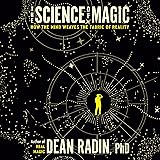In our fast-paced modern world, the pursuit of inner peace and mental clarity has become more important than ever. Many individuals turn to meditation, hoping to find a sanctuary from the constant barrage of thoughts, emotions, and external pressures. However, this journey often begins with significant misunderstandings about what meditation truly entails, leading to frustration and a sense of inadequacy.
The esteemed Yongey Mingyur Rinpoche, in his insightful TED Talk presented above, masterfully dismantles these common misconceptions, guiding us toward a simpler, yet profound understanding of what it means to tap into our inherent awareness. He posits that the very act of seeing and hearing is, at its core, meditation—a direct connection to our fundamental awareness.
Demystifying Meditation: Beyond Emptying the Mind
One of the most pervasive myths surrounding meditation is the belief that its sole purpose is to stop thinking entirely. Many novices enter practice with the fervent desire to silence their minds, only to discover that the more they try to suppress thoughts, the more persistent and clamorous these thoughts become. Rinpoche humorously illustrates this with his “don’t think about pizza” experiment, which invariably leads to an overwhelming influx of pizza-related thoughts.
Indeed, scientific research on thought suppression, such as studies conducted in cognitive psychology, consistently demonstrates that attempting to block specific thoughts paradoxically increases their frequency and intensity. This phenomenon, often termed the “ironic process theory,” underscores the futility of fighting one’s own mind. Instead of striving for an impossible mental void, Rinpoche advocates for a different approach: simply connecting with our underlying awareness, which naturally encompasses our thoughts without judgment.
The Misconception of “Blissing Out” and the Illusion of Chasing Peace
Another common pitfall in meditation practice is the expectation of an immediate, blissful state of profound peace and relaxation. Individuals often embark on their meditative journey with a predetermined outcome in mind, only to find that actively searching for these states makes them more elusive. The more we strain to achieve calm, the more resistant our minds can become.
This pursuit can be likened to the hedonistic treadmill, where the continuous striving for positive experiences can ironically lead to less overall satisfaction. Rinpoche’s personal narrative, recounting his struggles with severe panic attacks from a young age, provides a powerful counter-narrative. Born amidst the serene Himalayas, his early life was nonetheless shadowed by intense fear and anxiety, demonstrating that external circumstances do not dictate inner peace. His journey was not about chasing tranquility but about confronting and transforming his relationship with his internal experiences.
The Journey to Awareness: Rinpoche’s Three Steps to Transformation
Rinpoche’s father, a distinguished meditation teacher, provided him with a crucial insight: fighting against panic or seeking to eliminate it is counterproductive. Instead, he likened awareness to the boundless sky and emotions like panic to fleeting storms or clouds. The sky remains ever-present, pure, and calm, regardless of the turbulent weather passing through it. This metaphor underscores that our fundamental quality of mind, our innate awareness, is always available, untainted by our experiences.
The challenge, Rinpoche explains, lies in our disconnect; we often perceive only the “clouds” of our thoughts and emotions, overlooking the expansive “sky” of our awareness. To bridge this gap, he outlines a practical, three-step approach for integrating awareness into daily life and transcending mental distress.
Step 1: Using a Support Object to Anchor Awareness
The initial stage of Rinpoche’s practice involves utilizing a support object to stabilize attention and connect with awareness. This foundational technique is common in many mindfulness traditions. During the talk, Rinpoche demonstrates this by having the audience listen to the resonating sound of a singing bowl.
The instruction is simple yet profound: merely listen to the sound with both ear and mind. Should thoughts of “pizza” or panic arise, the practitioner is encouraged to allow them to come and go without engagement, gently returning attention to the sound. This practice trains the mind to acknowledge internal phenomena without getting entangled, reinforcing the distinction between the observer (awareness) and the observed (thoughts/emotions).
Step 2: Meditating with Anything – Transforming Obstacles into Opportunities
Rinpoche’s personal journey highlights the next critical step. Despite his father’s teachings, he admits to a struggle with laziness, particularly during his rigorous three-year retreat in India, which he embarked upon at 13 years old. During the retreat, his panic attacks resurfaced, creating a profound sense of despair and the temptation to quit. This challenging period became the crucible for a breakthrough: learning to “live with panic.”
This second step involves using any experience—even challenging ones like panic, depression, or the “monkey mind” of incessant thoughts—as the object of meditation. Instead of resisting, one observes these internal states with awareness. When we observe panic, Rinpoche explains, “When you see the river, you’re out of river.” This means the act of mindful observation creates a space, preventing complete immersion in the emotion.
The benefits of this practice are threefold:
- Increased Awareness: The practitioner’s awareness expands, becoming larger than the panic or stress itself. This shift in perspective diminishes the power of the disturbing thoughts and emotions.
- Unveiling Wisdom: As one observes panic, its seemingly solid nature dissolves into smaller, discernible components: a sensation, a frightening image, a specific voice, or a background belief. When these pieces are examined individually, the unified, overwhelming experience of panic dissipates, revealing its inherently impermanent and constructed nature, much like “shaving foam” that appears solid but is full of bubbles. This insight offers a profound sense of detachment and understanding.
- Cultivating Acceptance and Compassion: By allowing panic to come and go without resistance, a deep sense of self-acceptance and self-compassion naturally emerges. This act of non-judgmental presence fosters a kindness toward oneself, a vital component of mental well-being. Studies have shown that self-compassion significantly reduces anxiety and depression, fostering emotional resilience.
Through this transformative practice, Rinpoche found that panic became his “teacher,” his “best friend,” and within weeks, it naturally subsided. This demonstrates that transformation is not about eradication but about changing our relationship with our experiences. This “buy one, get two free” approach to meditation offers a powerful path to inner peace.
Step 3: Open Awareness Meditation – Awareness Being with Itself
After successfully navigating his retreat and subsequently sharing his teachings globally, Rinpoche experienced a subtle emergence of ego. To counteract this, he embarked on a solitary “wandering retreat” in 2011, leaving behind all possessions and comforts with only a few thousand Indian rupees. This radical act of detachment led to immense hardship, including food poisoning and a near-death experience while alone on the street.
This extreme circumstance catalyzed the third and most advanced stage of his practice: open awareness meditation. Here, there is no longer a need for a support object; awareness simply rests within itself, like the sky existing without clouds. In this state, Rinpoche describes his body decaying, his senses fading, yet his mind becoming “so present, beyond free.”
This profound experience, while challenging to articulate, fundamentally shifted his perception of the world. Upon his return, the street became his home, trees radiated love, and the wind brought joy. Open awareness is about being utterly present and free, without attachment to any particular state or experience. It is the ultimate expression of inner peace and freedom, where the distinction between observer and observed dissolves, leaving only pure, unconditioned awareness.
Yongey Mingyur Rinpoche’s teachings offer a refreshing and deeply practical path to mental well-being. By re-framing meditation not as an arduous task of thought suppression or an elusive chase for bliss, but as a natural connection to our inherent awareness, he empowers us to transform our relationship with our inner landscape. Embracing awareness, compassion, and wisdom, we can navigate life’s storms with greater resilience and discover profound inner peace.








